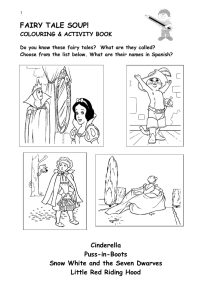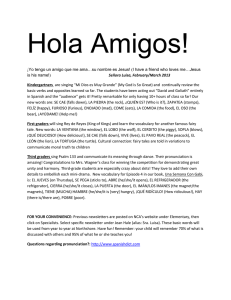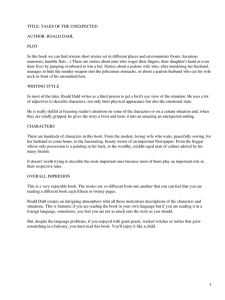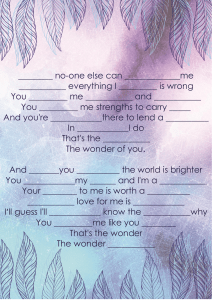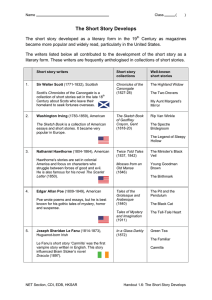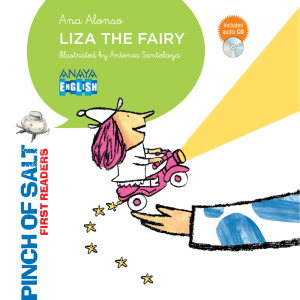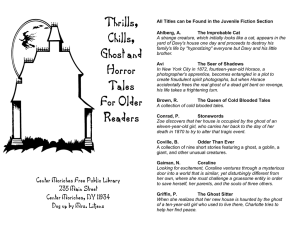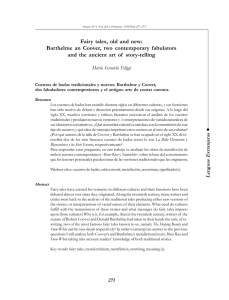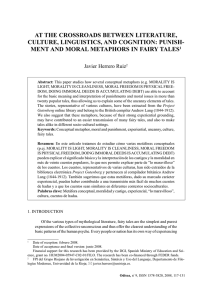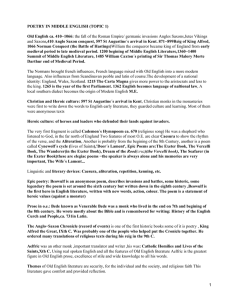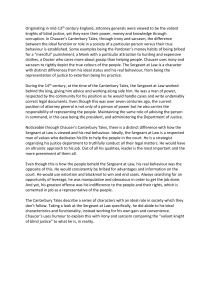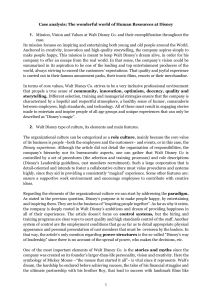Fairy Tales
Anuncio
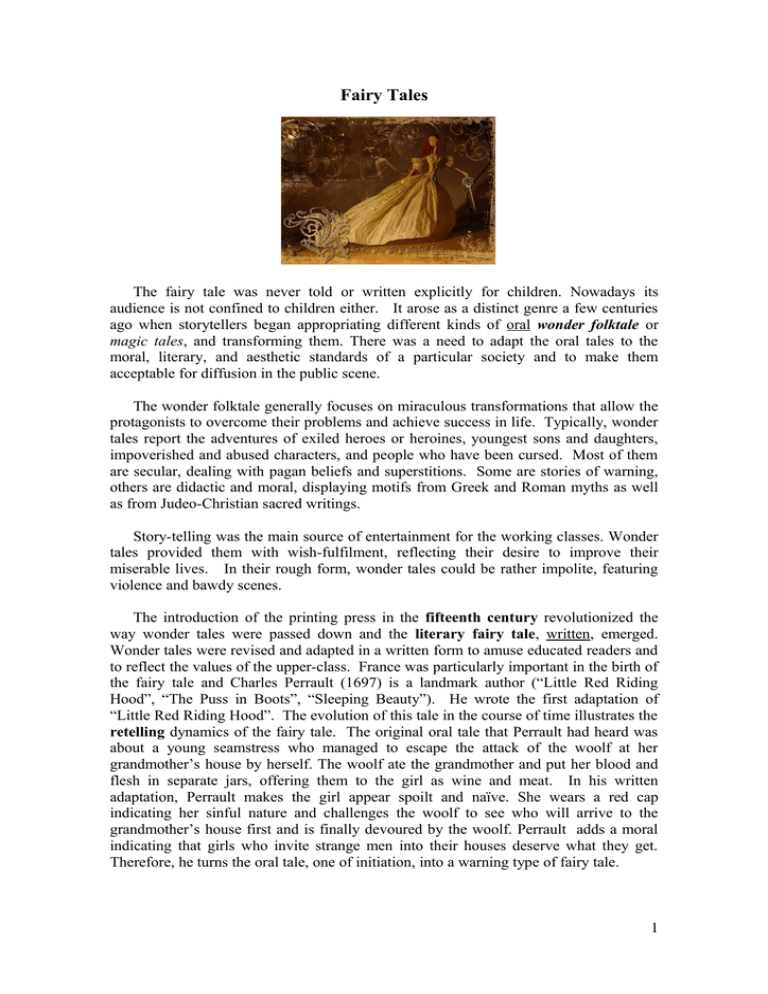
Fairy Tales The fairy tale was never told or written explicitly for children. Nowadays its audience is not confined to children either. It arose as a distinct genre a few centuries ago when storytellers began appropriating different kinds of oral wonder folktale or magic tales, and transforming them. There was a need to adapt the oral tales to the moral, literary, and aesthetic standards of a particular society and to make them acceptable for diffusion in the public scene. The wonder folktale generally focuses on miraculous transformations that allow the protagonists to overcome their problems and achieve success in life. Typically, wonder tales report the adventures of exiled heroes or heroines, youngest sons and daughters, impoverished and abused characters, and people who have been cursed. Most of them are secular, dealing with pagan beliefs and superstitions. Some are stories of warning, others are didactic and moral, displaying motifs from Greek and Roman myths as well as from Judeo-Christian sacred writings. Story-telling was the main source of entertainment for the working classes. Wonder tales provided them with wish-fulfilment, reflecting their desire to improve their miserable lives. In their rough form, wonder tales could be rather impolite, featuring violence and bawdy scenes. The introduction of the printing press in the fifteenth century revolutionized the way wonder tales were passed down and the literary fairy tale, written, emerged. Wonder tales were revised and adapted in a written form to amuse educated readers and to reflect the values of the upper-class. France was particularly important in the birth of the fairy tale and Charles Perrault (1697) is a landmark author (“Little Red Riding Hood”, “The Puss in Boots”, “Sleeping Beauty”). He wrote the first adaptation of “Little Red Riding Hood”. The evolution of this tale in the course of time illustrates the retelling dynamics of the fairy tale. The original oral tale that Perrault had heard was about a young seamstress who managed to escape the attack of the woolf at her grandmother’s house by herself. The woolf ate the grandmother and put her blood and flesh in separate jars, offering them to the girl as wine and meat. In his written adaptation, Perrault makes the girl appear spoilt and naïve. She wears a red cap indicating her sinful nature and challenges the woolf to see who will arrive to the grandmother’s house first and is finally devoured by the woolf. Perrault adds a moral indicating that girls who invite strange men into their houses deserve what they get. Therefore, he turns the oral tale, one of initiation, into a warning type of fairy tale. 1 Fairy tales were explicitly written for adults. In fact, they were considered to be useless and dangerous for children, due to their frivolity, and their promotion of superstitions, magic and fantasy. However, in the nineteenth century and thanks to the Romantic movement, several tales were revised to make them more suitable for children, adding Christian ideas and removing inappropriate passages, although the fantastic elements remained (“Cinderella”, “Little Red Riding Hood”, “Sleeping Beauty”, “Beauty and the Beast”). There was a new belief that children needed amusement, not just instruction. In 1819 the German Brothers Grimm began to revise their collected tales to make them more suitable for children. The Danish Hans Christian Andersen (“The Little Mermaid”) began publishing his tales around 1835, mixing humour, Christianity and fantasy to entertained and instruct the young and the old. “The Little Mermaid” is inspired in the Christian folk belief that supernatural beings like mermaids are not endowed with a soul but will vanish when they die. In Andersen’s tale, the mermaid wants to become human in order to have an immortal soul, she represents the search for transcendence. The tale, which has an unhappy ending, celebrates self-denial and glorifies suffering. In the Disney adaptation the philosophical overtones are lost. Most nineteenth century fairy-tale writers emphasized industriousness, honesty, cleanliness, virtuousness, and male authority. In the twentieth century, the fairy tale became institutionalized and incorporated into children’s formal education. The classic or conventional fairy tales are represented by Perrault, the Grimms and Andersen, and are retold by other writers. The way fairy tales are told and transmitted changed dramatically in this century. Most children nowadays first encounter the fairy tale though a Disney filmic adaptation and its merchandising. During his lifetime, Disney produced several major animated fairy-tales films: Snow White and the Seven Dwarfs (1937), Pinocchio (1940), Cinderella (1950) and Sleeping Beauty (1959). After his death, the company continued in this vein with The Little Mermaid (1989), Beauty and the Beast (1991), Aladdin (1992) and so on. Sources and bibliography Bryman, Alan. The Disneyization of Society. London: Sage, 2004. Giroux, Henry. El Ratoncito Feroz: Disney o el Fin de la Inocencia. Haas, Lynda et al eds. From Mouse to Mermaid: the Politics of Film, Gender, and Culture. Bloomington: Indiana University, 1995. Wasko, Janet. Understanding Disney: the Manufacture of Fantasy. Cambridge: Polity Press, 2001. Zippes, Jack (ed). The Norton Anthology of Children’s Literature: The Traditions in English. Norton, 2005 ____. The Oxford Companion to Fairy Tales. OUP, 2000. Picture: “Fairy Tale; Bajka”. (c) TanjaN1, 2007. In flickr with cc licence. 2 3
